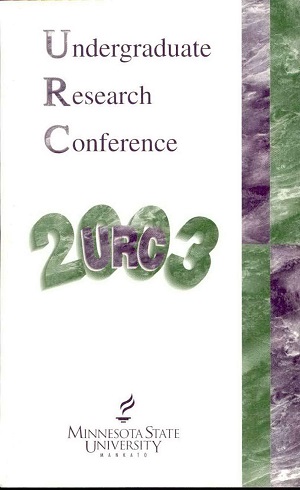Bound Morpheme Usage of Children with Williams Syndrome and Typically Developing Children
Location
CSU
Student's Major
Speech, Hearing, and Rehabilitation Services
Student's College
Allied Health and Nursing
Mentor's Name
Patricia Hargrove
Mentor's Department
Speech, Hearing, and Rehabilitation Services
Mentor's College
Allied Health and Nursing
Description
illiams Syndrome (WS) is a rare genetic disorder resulting in facial abnormalities, small stature, mental impairment, and heart disease. Children with WS are believed to have stronger communication skills that expected based on their I.Q. The purpose of our research was to explore one aspect of communication that has not been investigated previously in children with WS. We attached the use of word endings such as "ing," "ed," "s," and '"s" (bound morphones) in the spontaneous speech of children with WS and typically developing children. The result indicated that there was not a significant difference in the number of bound morphemes in the two groups of children. This was contrary to our original hypothesis.
Bound Morpheme Usage of Children with Williams Syndrome and Typically Developing Children
CSU
illiams Syndrome (WS) is a rare genetic disorder resulting in facial abnormalities, small stature, mental impairment, and heart disease. Children with WS are believed to have stronger communication skills that expected based on their I.Q. The purpose of our research was to explore one aspect of communication that has not been investigated previously in children with WS. We attached the use of word endings such as "ing," "ed," "s," and '"s" (bound morphones) in the spontaneous speech of children with WS and typically developing children. The result indicated that there was not a significant difference in the number of bound morphemes in the two groups of children. This was contrary to our original hypothesis.




